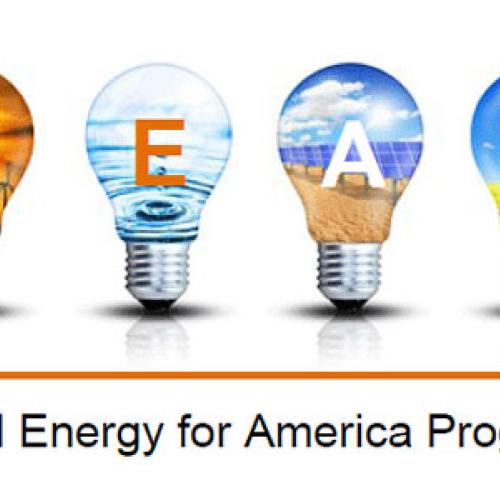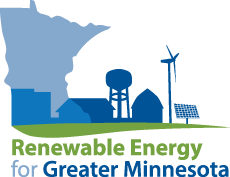See what we did there with the blog post title? REAP also stands for Rural Energy for American Program, a grant and loan offering from USDA Rural Development that can help farmers and rural small businesses do renewable energy and energy efficiency work.
As a new deadline is approaching on May 2, 2016, we thought it would be timely to check in with Ron Omann, Minnesota’s State Energy Coordinator with USDA Rural Development, to get all of the necessary details.
Joel Haskard: What was REAP funding like for Minnesota this last round?
Ron Omann: Rural Development was able to assist nearly 80 projects with the amount of funding allocated to Minnesota in the last round. These projects will save or generate enough energy to offset the energy consumption of over 800 homes. However, if we were to compare the amount of applications that we received with the amount of projects we were able to fund, our “success rate” would be around 30%, meaning we were only able to assist less than 1/3 of all applications who requested financial assistance. It’s great to have the appetite for renewables and energy efficiency, but we need to find ways to improve this funding success rate and provide more of our applicants with the opportunity to improve their energy independence.
Joel Haskard: Is there an explanation for why the funding rate was so low?
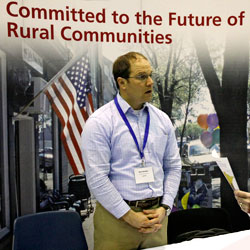 Ron Omann: Unfortunately it was just a factor of scoring low on the program’s priority point system. It is no reflection on the types of projects that were submitted. The system is made of eight criteria that factor in the amount of energy saved or replaced, size of the applicant, and economic payback of the proposal. It was a very competitive year so projects that missed out on one or two criteria were at higher risk of being less competitive. All applicants were saving or creating energy; the projects saving the most energy just happened to be the ones that received funding.
Ron Omann: Unfortunately it was just a factor of scoring low on the program’s priority point system. It is no reflection on the types of projects that were submitted. The system is made of eight criteria that factor in the amount of energy saved or replaced, size of the applicant, and economic payback of the proposal. It was a very competitive year so projects that missed out on one or two criteria were at higher risk of being less competitive. All applicants were saving or creating energy; the projects saving the most energy just happened to be the ones that received funding.
Joel Haskard: What are some of the things that make a successful REAP application?
Ron Omann: Using the new regulation that came out earlier in 2015, the application was streamlined, and the need for an exhaustive technical review was eliminated. As a result, final selections come down to an objective scoring system. Within that system, applications that score well are those saving or generating a large share – over 50% – of their current energy usage. Also, applicants with very small businesses are scoring higher – we use the Small Business Administration’s size standards – so looking at the size of the applicant’s business in comparison to those standards can give an application more points.
For example, most of the manufacturing sector has a 500 employee limit to be considered “small.” An applicant would receive the maximum 10 points in this category if the business has less than 165 employees, which is still a pretty sizable operation. However, agriculture producers have a relatively low size standard ($750,000 of gross annual receipts), and a grain or dairy farming operation knows that this is not a large amount of money when we are talking about gross income. Many producers were not awarded points due to the size of their operation, but small vegetable farmers who generally don’t have a large gross income tend to score well in this category.
Joel Haskard: What kinds of projects have been funded in years’ past, and have you seen a shift in technologies being funded recently?
Ron Omann: Generally, we see quite a bit of energy efficiency proposals which have traditionally been grain drying equipment, but we’ve seen an increase in building improvement projects such as LED lighting replacements. In fact, all of Minnesota’s grant requests under $20,000 that involved building improvements were funded in 2015. However, the largest change to our portfolio has been the increase in the number of solar PV projects awarded. Almost half of the projects (37) we assisted in 2015 were solar. Minnesota’s average over the previous 5 application cycles was around 5 funded solar projects per year.
Joel Haskard: Recently the application process got a lot easier for smaller projects. Could you say more about that?
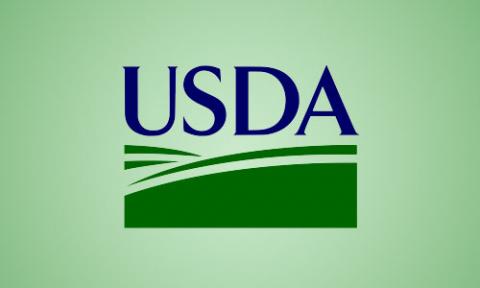 Ron Omann: That was an important piece of the new rule mentioned earlier. The idea was to remove barriers for individuals to access the program by reducing the paperwork burden. Additionally, nation-wide application forms were developed for the first time in the existence of the program, which eliminated much of the upfront paperwork. However, the application process can still be daunting if you’ve never tackled a Federal grant before. Clean Energy Resource Teams (CERTs) has been helpful in assisting applicants with the basics of filling out applications, and has been a nice resource for potential applicants to take advantage. We are also exploring new ways to assist applicants with the completion of these documents through video tutorials and other online instruction-based tools.
Ron Omann: That was an important piece of the new rule mentioned earlier. The idea was to remove barriers for individuals to access the program by reducing the paperwork burden. Additionally, nation-wide application forms were developed for the first time in the existence of the program, which eliminated much of the upfront paperwork. However, the application process can still be daunting if you’ve never tackled a Federal grant before. Clean Energy Resource Teams (CERTs) has been helpful in assisting applicants with the basics of filling out applications, and has been a nice resource for potential applicants to take advantage. We are also exploring new ways to assist applicants with the completion of these documents through video tutorials and other online instruction-based tools.
Joel Haskard: What’s next for USDA Team RD (Rural Development)?
Ron Omann: Well, REAP never sleeps – after coming off a series of project awards in September, we had a recent deadline pass on November 2 for projects requesting grants of $20,000 or less. We have selected a small number of projects that we are working toward awarding a contract for funds, and we already have a steady stream of applications coming in for the next deadline. Additionally, our staff around the state is working on outreach to lenders and interested parties on our guaranteed loan program. While the grants are very competitive, the REAP Guaranteed Loan Program has ample funds and a year-around award process.
Joel Haskard: Give me a 30-second summary of the REAP Guaranteed Loan Program.
Ron Omann: Same project and applicant eligibility as the REAP grant; however, rather than direct financing, Rural Development guarantees loans made by lenders directly. In case of a default of the loan, USDA will step in and repay a significant percentage of the project’s cost. It is an attractive tool for lenders to use to help them mitigate risk on project they might not normally finance.
Joel Haskard: Any last thoughts on folks thinking about submitting a REAP application?
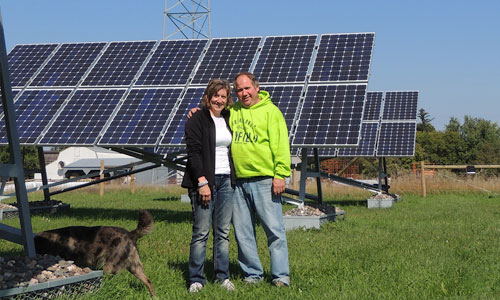 Ron Omann: The next deadline will be May 2, 2016 for all grant requests; however, applications can be submitted at any time. In fact, if projects want to start construction it is important they submit their application before they expend any funds or begin construction.
Ron Omann: The next deadline will be May 2, 2016 for all grant requests; however, applications can be submitted at any time. In fact, if projects want to start construction it is important they submit their application before they expend any funds or begin construction.
My last piece of advice is to take a hard look at idea of requesting $20,000 or less in grant funds. Even if that doesn’t equal 25% of the total project costs you are eligible to receive, there is a set-aside of these funds in which applicants have been much more successful in securing than the larger or unrestricted grant amounts.
To learn more about REAP, click here to visit the program website >>
Find out how you can power your farm or business with the Renewable Energy for Greater Minnesota program

